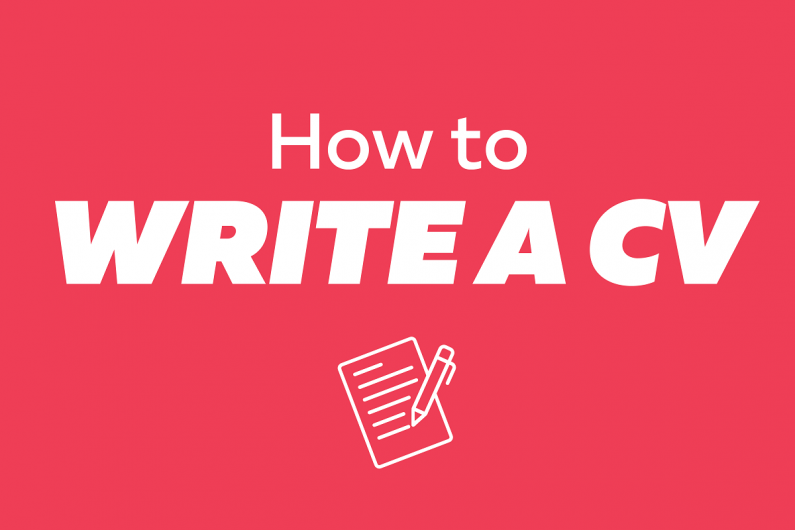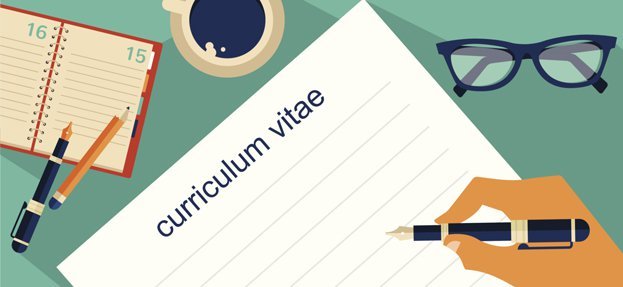
How to write a resume: a template of a well-written resume for work
Wondering how to write a good CV that will catch the employer’s eye and get you invited to an interview? You do not know what requirements you have to meet and which elements of the employer pay the most attention?
You’ve come to the right place. In a moment you will learn how to describe your greatest strengths in your CV and what tricks to use to leave the competition behind. First, we will show you a template of the finished CV, then we will discuss its individual elements.

At the very end, you will find a list of examples of how to write a CV for different professions, industries, and positions – along with over 50 ready-made templates of well-written CVs that you can copy.
How to write a CV for a work-ready template to use
Name
Sales representative
Phone number
Email address
Link to LinkedIn profile (optional)
Professional Summary
I am a sales representative with over 3 years of experience (now Nestle). Every day I prepare cooperation offers and actively look for new clients. In 2018 I managed to acquire as many as 14 key clients (the best result in the team). In your company, I would like to build my own sales team and further develop in the food industry.
Specialized skills
- English – C1/C2 level
- very good knowledge of the Office suite (including Excel)
- knowledge of the realities of sales in the food industry
- category B driving license
Soft skills
- developed negotiation skills, high personal culture, and communication
- great work organization, independence, and responsibility
- enthusiastic attitude to work, openness to new solutions, and learning
Experience
04.2017 – now Nestle
Position: Sales Representative
Responsibilities:
- supporting the process of creating and implementing plans for cooperation with key customers based on a sales strategy
- acquiring new customers and implementing sales plans
- proposing new solutions and tools aimed at improving trade marketing activities
- cooperation with the marketing department in creating advertising campaigns
Success:
- acquisition 14 key customers of 2018 (the best result in the team)
- implementation of sales plans at the level of 95-150%
01.2015–03.2017 Biedronka
Position: Junior Seller / Sales Representative
Responsibilities:
- seeking and establishing cooperation with new clients from the traditional channel
- implementation of designated sales and distribution plans
- support for regular clients
Education
2015-2018 University of Warsaw
Major: Management
Bachelor’s degree obtained
Interests
I love to travel (especially in Central and Eastern Europe) and be on the move. Including that’s why I chose the profession of a sales representative (I am good at working “on the road” and on business trips).
I consent to the processing of my personal data by [company name] to recruit for the position I am applying for.
Now you will learn how to write an effective CV step by step and what should be included in a good CV:

Start writing a curriculum vitae with your personal and contact details
Start writing your CV by entering your details. In addition to your name and surname, add a header with the name of your current position (or, for example, learned profession). Of course, it is best if it is related to the subject of the job offer you are interested in.
In the contact details section of your CV, you must provide your phone number (preferably mobile) and e-mail address. Remember that we don’t write funny, private addresses on a professional CV. Ideally, the e-mail should contain only your name and surname.
Additionally, you can add a link to your LinkedIn profile as most recruiters look for and screen candidates there. This way you will also increase your credibility as a professional.
Remember that your CV does not mention your gender, marital status, or address unless your employer has specifically stated this in the advertisement you are applying for.
Add summary and career goals to your CV
Our example of how to write a resume includes the so-called professional summary. What is this? The CV summary is a short description of your most important qualifications, work experience, successes, and key skills. You can also call it the About Me resume section.
Thanks to this section, the employer will immediately learn about your greatest strengths, without having to read the entire CV. You don’t need to write too much – a 4–5 sentences long description is enough.
What to write in the summary? First of all, remember to match them to the job offer – first, describe in your CV the qualifications that are related to the requirements in the advertisement. For example, if an employer is looking for a person with higher education, knowledge of the financial industry, and Excel, these are the points you should refer to.
The summary should also include professional goals. How do you write them? Explain, for example, why you are interested in this offer, in what direction you want to develop, and what you can do for this particular company.
It is best to prepare a professional summary at the end of writing your CV. Simply at this point, you will know perfectly well which competencies and achievements are worth distinguishing and how to encourage the employer to invite you to an interview.
At the top of your CV, focus on skills and highlight important competences
The skill description is the second most important section of an interesting and modern resume – right after the career summary. In it, focus primarily on hard, specialized competencies that the employer can check, e.g. knowledge of a foreign language or operation of a computer program. Also enter your level of proficiency, eg English – C1/C2 level.
When it comes to the so-called soft skills in your CV, include only those mentioned by the employer in the advertisement. If you enter general competencies such as “diligence” in this section of the curriculum vitae, you will in no way distinguish yourself from other candidates.
Describe your work experience in points in your CV.
Also in this section, a good CV should match the job offer. Unlike a traditional resume, try to focus on the positions and responsibilities that most closely relate to the employer’s requirements as stated in the advertisement.
Workplaces are best described using the resume the principle of the so-called reverse chronology – whether you’re writing a modern or classic resume. What does it mean? Your current or last company should be at the top of the curriculum vitae, and the places where you worked e.g. 5 years ago at the bottom.
How to write in your CV that you are still working? Just enter the date you started working with the company and add “now” (eg 10/2017 – present). Remember to also include the month in the date. For example, if you specify the period 2018-2019, your employer may suspect that you want to hide something, e.g. the fact that you only worked in a given company from December 2018 to January 2019, i.e. only two months – not a full year.
When describing your experience in your CV, you should provide the name of the company, period of employment, name of the position, list of duties (must be in points), and the greatest successes. You can divide the tasks into e.g. Main responsibilities and Additional responsibilities and add a subsection Achievements to the CV.
Try to be specific and detailed. Show off the numbers, the names of the companies for which you carried out projects, or the names of the tools and methods you used. The employer should be able to verify this information. Entering, for example, “conversations with clients” in the CV does not make sense – something like that can be mentioned by each candidate.
Create a short section in your CV with a description of your education
Currently, employers attach much less importance to education. Usually, they simply require secondary or higher education, sometimes in a major. Of course, the exception is professions in which you must have a certain diploma – for example in the case of lawyers.
When writing the Education CV section, you do not have to write too much the topic of your education. Write only the years of study, the name of the university and department, the field of study, and the title obtained. If you haven’t studied, describe your high school, technical college, or vocational school.
Wondering how to describe in your CV you have just started, ongoing studies? As with work, add “now” in the time frame – e.g. 2018 – now. When describing your education, you don’t have to specify months, years of study are enough.
Add your interests to your CV – they also matter
Describing your interests in your CV is a chance for you to stand out from other candidates, show your “human” face, give to remember. And he proved that your work will not only be a chore, but also a pleasure.
When describing your interests in your CV, try to show that they are related to some extent to the job you are applying for. Employers love passionate employees. Of course, you cannot lie in a CV – coloring reality is usually verified during an interview. When writing this section of your resume, simply focus on those interests and passions that may be useful from the employer’s point of view.
Finish your CV with the correct clause and check the length of the document
At the very bottom of the document, you should put the current CV clause with consent to the processing of personal data (following the provisions of the GDPR). Here is an example of a correctly written CV clause:
I consent to the processing of my personal data by [company name] to recruit for the position I am applying for.
Are you applying to work abroad? Check the correct clause of the CV in English.
Remember not to overdo the length of the document. A perfect CV should fit on one A4 page. Why? Employers who get hundreds of resumes do not have time to browse through multi-page documents. The exception is when you have very rich professional experience related to the job offer. In this case, try to fit your CV on 2 pages.
Save your resume in the most professional format. Why is PDF better than DOC?
When your CV is ready, save it in PDF format. Why is it better than a curriculum vitae in DOC or DOCX? Because you will be sure that the employer sees exactly the document you sent. You don’t have to worry about which program it will be displayed. Besides, in the PDF CV template, no one will make changes to your document, which can happen with a Word CV.
You already know how to write a CV that will help you get an invitation to an interview and what format is the best CV. However, remember that apart from the content, the appearance of the document is also important. The enlarged headers are very important – thanks to them the employer will find the most important information in the CV right away. Also take care of aesthetic formatting, line spacing, use bolds and bullets.
You can conveniently create such a document in the LiveCareer CV creator, where you will find ready-made CV templates to fill in. Our resume writer will also automatically save your document in PDF (or in Word if you want to edit it later).
Finally, make sure there are no typos in your resume and errors. Such a simple mistake can destroy your chances – the employer will immediately think that you are not paying attention to your duties. Additionally, your CV may turn out to be funny. Also, remember that the recruiter may print your CV before the interview, so avoid too dark background colors (the paper could wrinkle).
Finally, a quick summary. Here are the correct sections you should include in a good CV:
- Personal Details
- Job Summary
- Skills (including Soft Skills)
- Work experience
- Education
- Interests
- GDPR clause with consent to the processing of personal data
If your target workplace is Poland, you can attach a photo to your CV. However, if you apply for a job in the UK, USA, Canada, or Australia, you must choose a CV template to fill in without a photo (local recruiters will reject the document with the photo so as not to be accused of discrimination based on the candidate’s appearance, gender or nationality).
